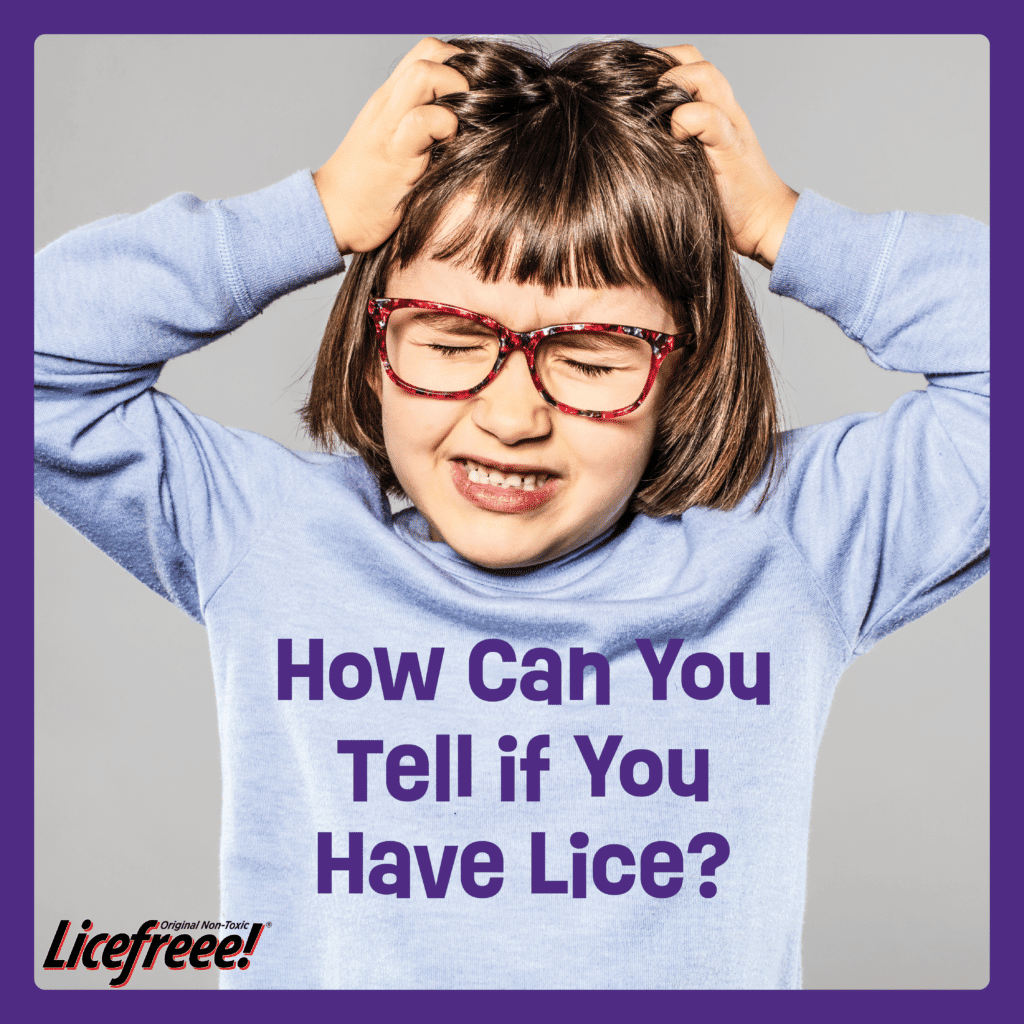
Itchy, scratchy scalp? It’s time to check for lice! Lice are small, wingless insects that feed off human blood and live on the scalp. They lay and attach their eggs to human hair follicles and are highly contagious, especially among school-age children. Several tell-tell signs and symptoms can indicate a lice infestation.
In this article, we’ll cover how you can tell if you have lice and, more importantly, how to treat them.
The most common sign that you may have lice is an itchy scalp, neck, and ears. The irritation is caused by a natural allergic reaction to the lice’s saliva. It can cause extreme itchiness, especially at night. Another common sign of lice is tiny, white specks on the hair that can sometimes be confused with dandruff. These are lice eggs (also called nits). They are usually the size of a pinhead and can be found close to the scalp, attached to hair shafts. One way to distinguish the difference between nits and dandruff is to try to move the speck. Dandruff will move if you flick it, whereas a nit sticks to the hair and will not move.
Another common sign of lice is the presence of adult lice themselves. You may notice tan or gray insects about the size of sesame seeds. You’ll have to look intently, as these insects can be challenging to spot and move quickly. They can most often be seen crawling through the hair near the scalp.
Other symptoms of a lice infestation include irritability, trouble sleeping, secondary infections, and swollen lymph glands in severe cases.
The best way to identify lice is by conducting frequent at-home head examinations. This should be your first step to confirming an infestation if you suspect lice, and it can be done at home. Using a fine-toothed or nit comb, separate the hair and comb section by section, starting at the roots and working your way down. The comb will pull out adult lice and nits if lice are present. You should use a magnifying lens to help identify any lice or eggs as they are very small and easy to miss.
Uh-oh, so your at-home examination has yielded a lice infestation? It’s essential to stop the infestation at its roots, literally! You will want to treat the infected person, along with your home. Lice can be transferred to clothing, bed linens, and furniture. You’ll want to clean and wash any soft fabric materials the infected person has come in contact with to avoid further spreading. An excellent solution to stop lice and protect your home is the Licefreee Ultimate Family Kit. The kit includes a lice and nit comb for at-home examinations, Licefreee Spray to kill lice on humans, and Licefreee Home for your home.
Once your infestation is under control, there are steps you can take to help prevent lice in the future. Because lice are easily spread by head-to-head contact and can also travel on clothes and fabric, avoid sharing personal items such as combs, brushes, scarves, hats, and headphones with others. In addition, speak with your children about lice and how they are spread – recommend that they don’t hug or come into close contact with others to avoid spreading lice.
If you know of a head lice outbreak from school or your peers, conduct frequent at-home examinations to prevent a more severe infestation from reoccurring.